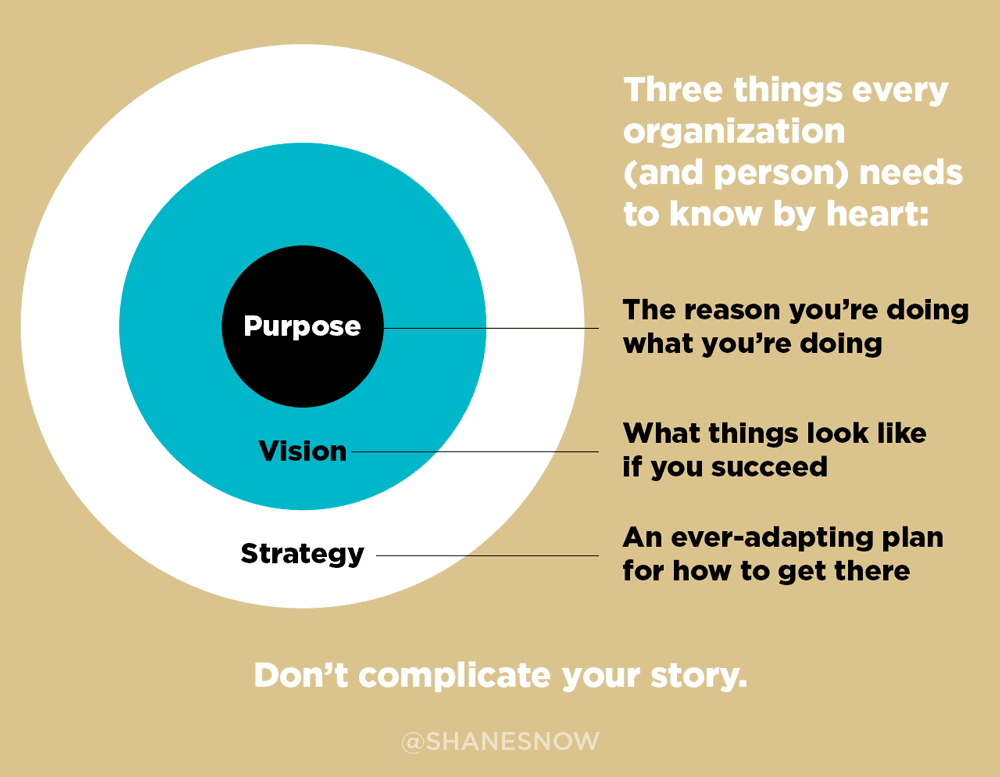Breaking the Mould: A Guide to Growing a Brand
Regarding business success, one thing is always clear – growing a brand is a non-negotiable if you seek long-term growth. But what does it mean to develop a brand? Why is it necessary? These are the pressing questions that any entrepreneur should ask themselves.
As it turns out, market research shows that consumers prefer to purchase products from brands they’re familiar with or know. A whopping 59% of consumers feel this way. Additionally, 21% of consumers said they bought products from brands simply because they shared the same values.
But in today’s cutthroat business world, where competition is the norm and standing out is essential, growing a brand takes on a new dimension. That’s why following the critical steps outlined in this guide to achieving brand growth is crucial. Don’t worry; we’ve got you covered!
To grow your brand optimally, knowing your brand is the foundation of everything. Understanding what your brand stands for, identifying its values and mission, determining your target audience, evaluating your current brand identity, and creating a brand persona are all essential.
In other words, it’s vital to have your brand’s identity crystal clear before you can start growing it. But that’s just the beginning.
Table of Contents
1 – Before Growing a Brand: Know Your Brand

Knowing it is the foundation of everything regarding growing a brand. Before you take any step towards brand growth, it’s essential to define what your brand stands for, determine its values and mission, identify your target audience, and evaluate your current brand identity.
Creating a persona representing your brand’s values and appealing to your target audience is also vital. A brand persona is a fictional character representing your brand’s personality and is essential to your brand’s success.
Once you understand your brand, you must then understand your target audience. Conduct research and gather insights into their behaviour, preferences, and needs. Based on this information, you can create messaging that resonates with your target audience.
According to a survey conducted by Propel Software, 54% of consumers have stopped using a brand due to inconsistency in its messaging. Therefore, developing a consistent brand identity and messaging that resonates with your target audience is vital to building customer trust and loyalty.
Your brand messaging must be unique, relevant, and compelling. It should communicate your values, mission, and brand personality while addressing your customer’s needs and pain points.
In summary, growing a brand starts with understanding your brand and your target audience. You must research to identify your brand’s values, mission, and target audience. Once you know your brand and target audience, creating a brand persona and crafting a consistent brand identity and messaging is essential to building customer trust and loyalty.
2 – Identify Your Unique Selling Proposition (USP)

Developing a unique selling proposition (USP) is crucial when standing out in a crowded marketplace. It differentiates your brand from the competition and helps you attract and retain loyal consumers. But what exactly is a USP?
A USP is a unique benefit that your brand offers to your customers. It’s what makes your brand different from others in your industry. By developing a compelling USP statement and creating a messaging strategy around it, you can differentiate your brand and attract new consumers.
However, it’s not just about being different; it’s about being unique in a way that resonates with your target audience. That’s why understanding your audience is critical to developing a strong USP. You must understand their needs, behaviours, and preferences to generate a USP that appeals to them.
- Hardcover Book
- McMakin, Tom (Author)
- English (Publication Language)
- 256 Pages – 10/27/2020 (Publication Date) – Wiley (Publisher)
According to Adweek, 55% of consumers purchase based on shared values with a brand and are loyal to brands that show social responsibility. Therefore, identifying key factors that set your brand above the competition, such as social responsibility, quality, or affordability, can help attract and retain loyal consumers.
Your USP statement should be clear, concise, and easy to understand. It should communicate the unique benefit of your brand and why customers should choose your brand over others in your industry. Once you have your USP statement, you can create a messaging strategy that communicates your USP through all channels, including your website, social media, and advertising.
A strong USP and messaging strategy are essential to differentiating your brand and attracting new consumers. It’s not just about being different; it’s about being unique in a way that resonates with your target audience. By identifying key factors that set your brand apart and communicating them effectively, you can attract and retain loyal customers who value your brand’s unique benefits.
3 – Develop a Brand Strategy

Congratulations, you’ve nailed down your brand’s unique selling proposition (USP). You might think it’s time to sit back and relax, but nope! It’s time to develop a brand strategy that promotes your USP and takes the market by storm.
A brand strategy is a roadmap that guides your brand’s growth, helps you navigate your competition, and ensures your actions align with your overall brand goals. Developing a brand strategy involves several steps, including creating clear brand guidelines, determining your marketing channels and tactics, developing a content marketing plan, creating a social media strategy, and developing a brand identity guide.
Creating clear brand guidelines is an essential component of a successful brand strategy. It ensures consistency in messaging and design across all marketing channels. Clear procedures will help your team create a cohesive brand voice and design elements aligning with your brand values, mission, and vision.
Social media is another essential component of a brand’s marketing strategy today. According to a survey, 80% of consumers prefer to interact with brands on social media. Therefore, creating a solid social media presence is crucial for brand success. But it’s not enough to post random content and hope for the best. Developing a social media strategy that aligns with your brand’s values and message is essential to increase engagement and attract new consumers.
- Neumeier, Marty (Author)
- English (Publication Language)
- 208 Pages – 08/04/2005 (Publication Date) – New Riders (Publisher)
Developing a content marketing plan that engages your target audience is also crucial. Your content must be relevant, engaging, and informative. Use your USP to create content that differentiates your brand and appeals to your target audience.
Finally, creating a brand identity guide ensures consistency across all channels. A brand identity guide outlines your brand’s visual identity, including logos, colour schemes, typography, and tone of voice.
Developing a comprehensive brand strategy that aligns with your USP will help you take your brand to new heights. Establish clear brand guidelines, create a content marketing plan, develop a social media strategy, and create a brand identity guide. By developing a solid brand strategy that resonates with your audience, you can differentiate your brand from the competition and attract new consumers.
4 – Measure Your Brand’s Progress

So, you’ve developed a killer brand strategy and are ready to take the market by storm. But how do you know if you’re succeeding? How do you track your brand’s growth and measure its progress? The answer is by identifying key metrics for measuring brand growth, identifying trends, evaluating the ROI of your branding efforts, and using feedback to improve your branding.
Identifying critical metrics for measuring brand growth is crucial to understanding your brand’s success. Metrics such as website traffic, social media engagement, and customer feedback can help you determine what’s working and what’s not. These metrics can also help you identify trends and opportunities for growth.
Evaluating the ROI of your branding efforts is another critical component of measuring brand growth. By calculating the cost of your branding efforts versus the revenue generated, you can determine the return on investment and make informed decisions about future branding initiatives.
Using feedback to improve your branding is also essential. Receiving customer feedback can help you identify areas of improvement and make necessary adjustments to your branding strategy. Positive feedback can reinforce your brand’s unique selling proposition and create brand advocates.
By tracking your brand’s growth metrics, evaluating ROI, and using feedback to improve, you can ensure that your brand is continuously evolving and adapting to meet the ever-changing demands of your target audience. Remember, the market shifts and your brand must adapt to survive.
Measuring your brand’s progress is crucial to its development and success. Identify critical metrics, evaluate ROI, and use feedback to improve. Doing so ensures your brand continues growing and thriving in a competitive market.
5 – Build a Strong Brand Culture

So, you’ve got a solid brand strategy and are tracking your brand’s growth. But how do you build a loyal consumer base that will stick with your brand through thick and thin? One word: culture.
Brand culture is the values, attitudes, and behaviours defining your brand and its operation. Creating a positive work environment emphasises your brand’s mission and values. Creating a solid brand culture can build a loyal consumer base dedicated to your brand and its message.
Creating a positive work environment is the first step in building a strong brand culture. This includes providing opportunities for growth and development, recognising employee achievements, and promoting work-life balance. Employees who feel valued and supported are likelier to be engaged and committed to their work.
It’s also important to emphasise the importance of your brand’s mission and values. This means communicating your brand’s purpose and how your products or services support that purpose. When employees understand and connect with your brand’s mission and values, they feel more invested in their work and are more likely to represent the brand in a positive light.
- Amazon Kindle Edition
- Miller, Mark (Author)
- English (Publication Language)
- 239 Pages – 11/02/2021 (Publication Date) – Amplify Publishing (Publisher)
Training employees to represent the brand is another critical component of building a strong brand culture. This includes training on your brand’s messaging, tone, and values, as well as on customer service and sales techniques. When knowledgeable and confident in representing the brand, employees are more likely to provide a positive customer experience and strengthen consumer loyalty.
Finally, encouraging employee engagement is essential to building a strong brand culture. This includes providing opportunities for employee feedback, recognising and rewarding employee contributions, and fostering a sense of community within the workplace. When employees feel connected to their colleagues and the brand, they are more likely to be committed to their work and represent the brand positively.
Building a strong brand culture is crucial to building a loyal consumer base. Define your brand culture, create a positive work environment, emphasise your brand’s mission and values, train employees to represent the brand, and encourage employee engagement. By doing so, you can build a successful brand with a loyal following of dedicated consumers.
6 – Innovate Your Brand

Innovation: it’s the lifeblood of any successful brand. In today’s ever-changing market, staying ahead of the curve and embracing new opportunities are more important than ever. Here’s how to innovate your brand and keep it competitive.
First, monitor industry trends and adjust your brand positioning accordingly. Keep an eye on what’s happening in your industry and identify emerging trends. This could be anything from changes in consumer behaviour to new technology or environmental concerns. By staying informed and adapting your brand strategy, you can stay relevant and appeal to a broader audience.
Second, implement new technology to enhance your brand’s impact. From social media tools to artificial intelligence, technology can help you reach new consumers and provide a better customer experience. Consider implementing chatbots and virtual reality in your marketing or exploring blockchain technology to improve transparency and trust.
Third, collaborate with other respected brands. You can reach new audiences and gain credibility by partnering with another company or influencer. Look for brands that share your values and target the same audience as you do. Together, you can create innovative campaigns and products that resonate with consumers.
Fourth, create new product lines or services. Don’t be afraid to experiment and try new things. Look for gaps in the market or areas where you can improve existing products or services. You can differentiate your brand and attract new customers by offering something new and innovative.
Finally, enter new markets. Whether expanding geographically or targeting a new demographic, entering new markets can help you grow your brand and attract new consumers. Conduct market research to identify opportunities and develop a strategy for entering new markets.
Innovation is the key to staying competitive and growing a brand. Monitor industry trends, implement new technology, collaborate with other brands, create new product lines, and enter new markets. By doing so, you can ensure that your brand remains relevant and appeals to a broad audience. So, go forth and innovate!
Conclusion
Growing a brand may seem daunting but essential for long-term success. These critical steps and strategies can break the mould and elevate your brand. Remember to stay true to your brand’s values and message, collaborate with others, and embrace new opportunities. Best of luck on your brand growth journey!
Last update on 2024-05-24 / Affiliate links / Images from Amazon Product Advertising API



